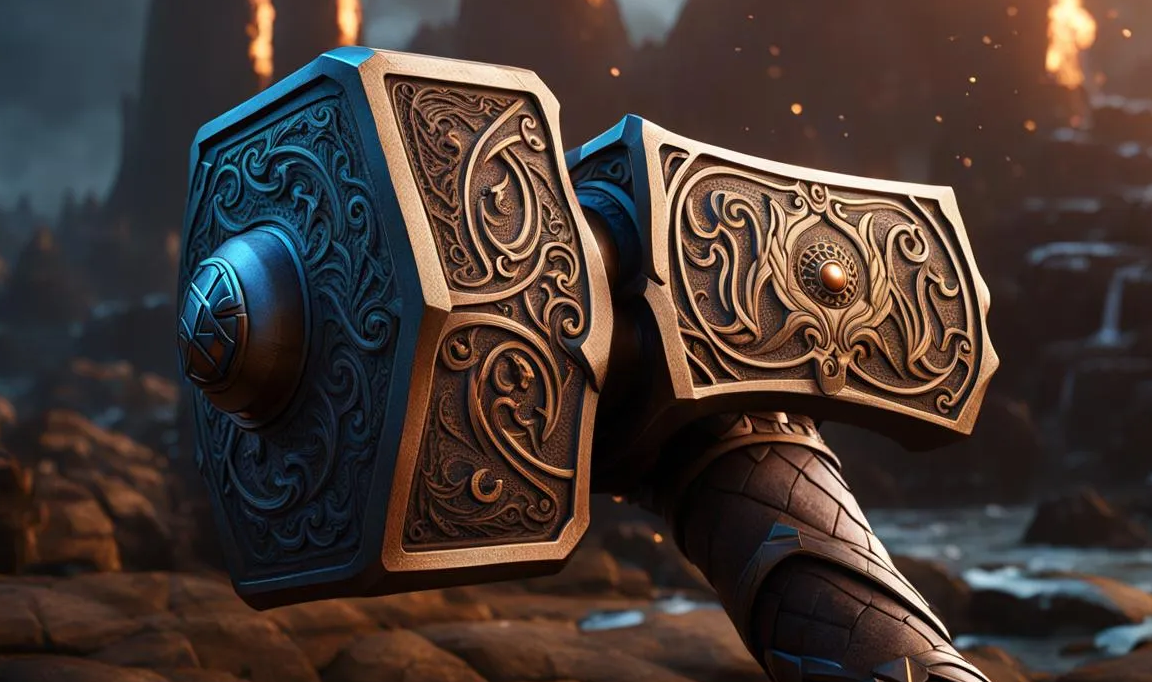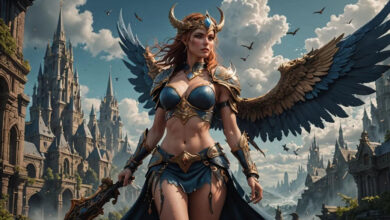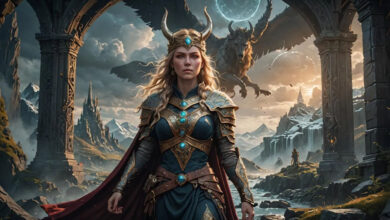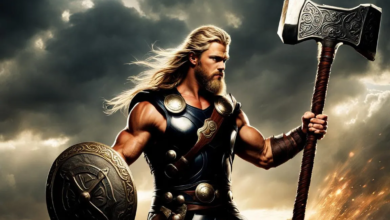Mjolnir, the hammer of Thor, the Norse god of thunder, is one of the most iconic and powerful symbols in Norse mythology. This legendary weapon, imbued with magic and revered across the Viking world, is not merely a tool of destruction but a multifaceted symbol of protection, consecration, and the might of the gods.
The origins of Mjolnir are steeped in mythological lore. According to the stories, the hammer was forged by the dwarven brothers Sindri (also known as Eitri) and Brokkr, as part of a wager with Loki, the trickster god. Loki bet his head that the dwarves could not create items more magnificent than those made by the sons of Ivaldi, another group of dwarves who had fashioned gifts for the gods. Accepting the challenge, Sindri and Brokkr set to work, creating not only Mjolnir but also Gullinbursti, a golden-bristled boar for Freyr, and Draupnir, a gold ring for Odin. Despite Loki’s attempts to sabotage their work by turning into a fly and biting Brokkr, the dwarves succeeded in creating these extraordinary items. Mjolnir, however, had a shorter handle than intended because of Loki’s interference, which meant that it could only be wielded with one hand.
Mjolnir’s symbolism extends beyond its physical manifestation. It is a symbol of divine authority and protection, capable of levelling mountains and yet used to bless marriages, births, and funerals. The hammer represents the ultimate protection of the cosmos and the gods’ realm against the forces of chaos, embodied by the giants. Its ability to return to Thor’s hand after being thrown, its indestructibility, and its requirement that one be “worthy” to wield it, are aspects that highlight the themes of loyalty, righteousness, and the fight against evil.
In the myths, Mjolnir is central to Thor’s role as a protector. One of the most famous stories involves the theft of Mjolnir by the giant Thrym, who demands the goddess Freyja in exchange for the hammer. Thor, disguised as Freyja, attends the wedding feast with Loki, only to reclaim Mjolnir when it is brought out to consecrate the marriage. Thor then uses the hammer to defeat Thrym and his giant guests, showcasing the weapon’s power and the cunning of the gods.
Beyond its mythological significance, Mjolnir was a symbol of protection in the Viking Age. Amulets in the shape of the hammer were commonly worn for protection and to signify allegiance to Thor. These amulets were especially popular during the Christianization of Scandinavia, serving as a counter-symbol to the Christian cross and a statement of resistance to the new religion.
The legacy of Mjolnir endures in modern culture, where it has been embraced by popular media, most notably in comic books and films. Its depiction as a symbol of heroism, justice, and the fight against evil transcends its mythological roots, resonating with audiences worldwide. The hammer’s requirement of worthiness to be wielded has become a metaphor for the virtues of courage, honesty, and integrity.
Mjolnir’s enduring appeal lies in its complex symbolism, representing not only the destructive power of thunder and storms but also the protective and consecrating functions of the hammer. It embodies the balance between destruction and creation, chaos and order, reflecting the nuanced worldview of the Norse people. Through Mjolnir, the myths convey deep truths about the human condition, the struggle against adversity, and the hope for protection and blessing from the divine.





